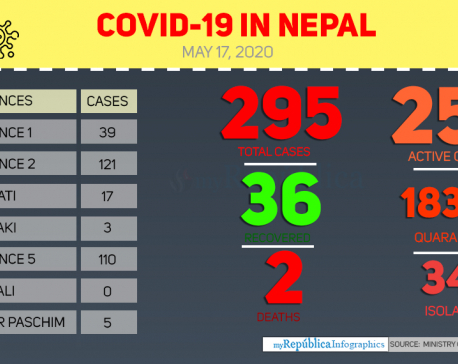
OR
No Plan: Healthcare in Nepal
Published On: April 1, 2017 09:09 AM NPT
The government officially proclaimed 744 local level units on March 10. It also declared that each of these units will have a hospital with a minimum capacity of 15 beds. Currently, there are in Nepal 203 health centers and 110 hospitals with at least 15 beds. But these healthcare institutions are not distributed evenly; in fact, four or five urban hubs account for the vast majority of them. In this case, it won’t be easy, or cheap, to establish most of these 744 hospitals from ground-up. Even the existing local-level healthcare centers are struggling. Of the around 3,800 health posts in the country, more than 1,800 don’t have buildings of their own or are operating out of a single room. The government had started upgrading erstwhile sub-health posts into health posts five years ago, with the goal of providing quality care to all Nepalis. But even though all sub-health posts have now been upgraded into health posts, which are supposed to carry out a plethora of health-related activities, they have been struggling to provide even basic healthcare services in the absence of necessary infrastructure and human resources.
One way to ensure that there is a hospital in each of the 744 local units would be to
upgrade many of these health posts. It’s a matter of nomenclature. Just like sub-health posts were renamed health posts, the health posts in turn can be easily renamed hospitals. This is the most likely course. It will also be a disastrous path to take. The goal of establishing hospitals in all
local units is to ensure that the constitutional right of every Nepali national to cheap, reliable and
accessible healthcare is honored. The goal is surely not to construct big buildings without first ensuring that they can actually effectively function as hospitals. As it is, most of our hospitals and health posts in rural areas are short of doctors and other medical professionals. How will the government provide each of the 744 hospitals with trained medical personnel when it is struggling to adequately staff just over 100 hospitals in existence? Interestingly, elected local bodies will be entrusted with managing day-to-day business of these new hopsitals. But how will these small municipal and village councils, with their limited resources, accomplish what the central government has not been able to do for two and a half decades?
There has been little homework on the kind of monetary help these local level units will need in order to set up the planned hospitals. Does the government have the money for such an ambitious undertaking? If not, will we once again ask our bilateral and multilateral donors to chip in? Nothing is clear yet. All our major parties guarantee health and education to 28 million Nepalis. No party wants to commit hara-kiri by opposing a popular measure. But they are also not serious about it. Thus even as 744 hospitals were announced, there had been no homework on how to get them up and running, a task that falls under the broader umbrella of implementing federalism. So perhaps it won’t be a stretch to infer from this that our political parties, notwithstanding their public posturing, were never serious about making the federal formula work.
You May Like This

Health ministry confirms three new COVID-19 cases, number of total cases reaches 295
KATHMANDU, May 17: Nepal reported three new cases of COVID-19 on Sunday evening, taking the national tally to 295. ... Read More...

Outreach Nepal lifts Nepal Ice AAN Futsal
KATHMANDU, May 13: Outreach Nepal has lifted the first ever Nepal Ice AAN Futsal Tournament 2018 defeating Media Basket by a... Read More...

Global Gag Rule could 'cripple' healthcare in Nepal
KATHMANDU, July 16: Nepal is likely to lose 26 million dollars in US aid money for family planning for this upcoming... Read More...






Just In
- Nepalgunj ICP handed over to Nepal, to come into operation from May 8
- Nepal to gift two elephants to Qatar during Emir's state visit
- NUP Chair Shrestha: Resham Chaudhary, convicted in Tikapur murder case, ineligible for party membership
- Dr Ram Kantha Makaju Shrestha: A visionary leader transforming healthcare in Nepal
- Let us present practical projects, not 'wish list': PM Dahal
- President Paudel requests Emir of Qatar to initiate release of Bipin Joshi
- Emir of Qatar and President Paudel hold discussions at Sheetal Niwas
- Devi Khadka: The champion of sexual violence victims



_20240423174443.jpg)









Leave A Comment